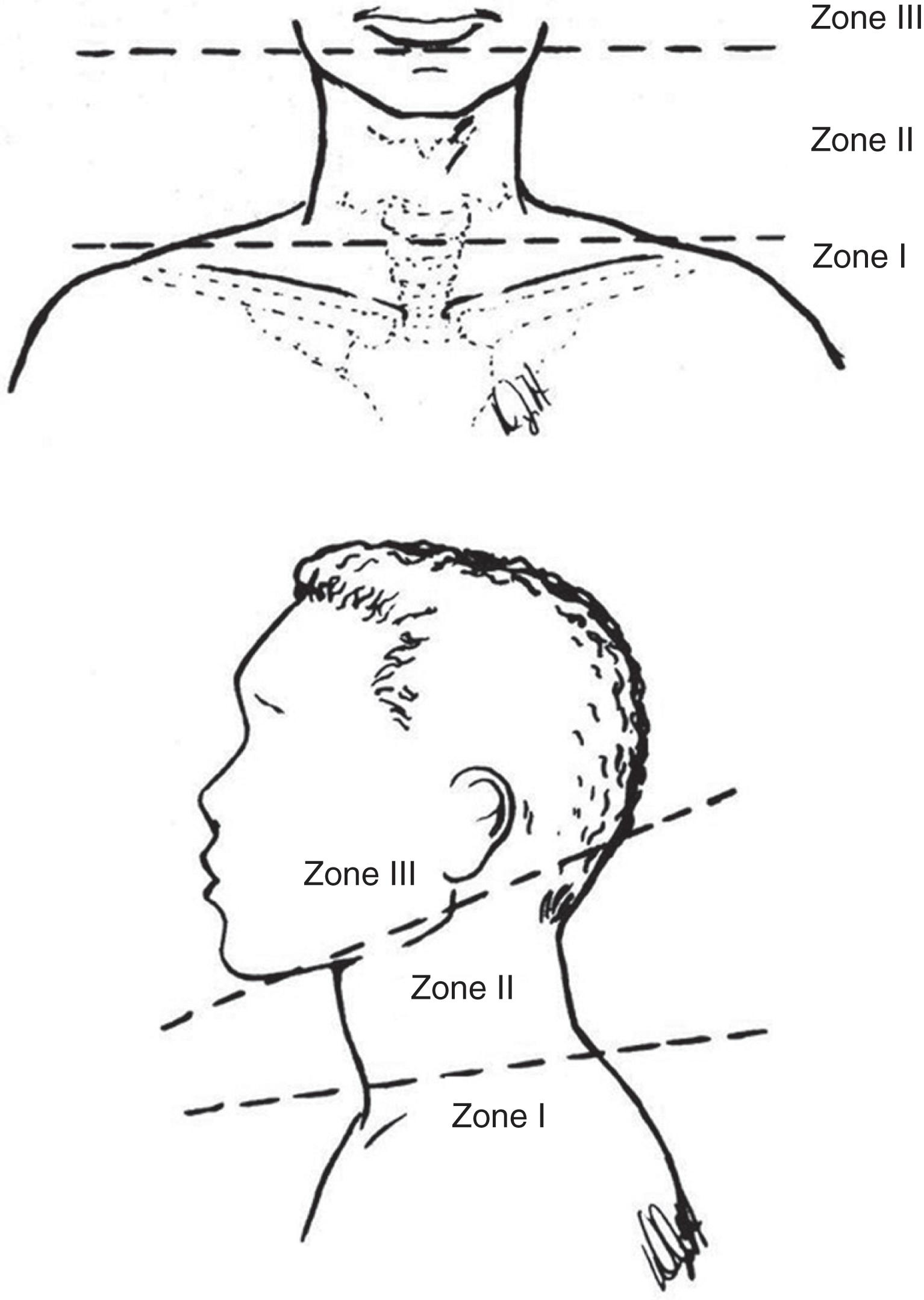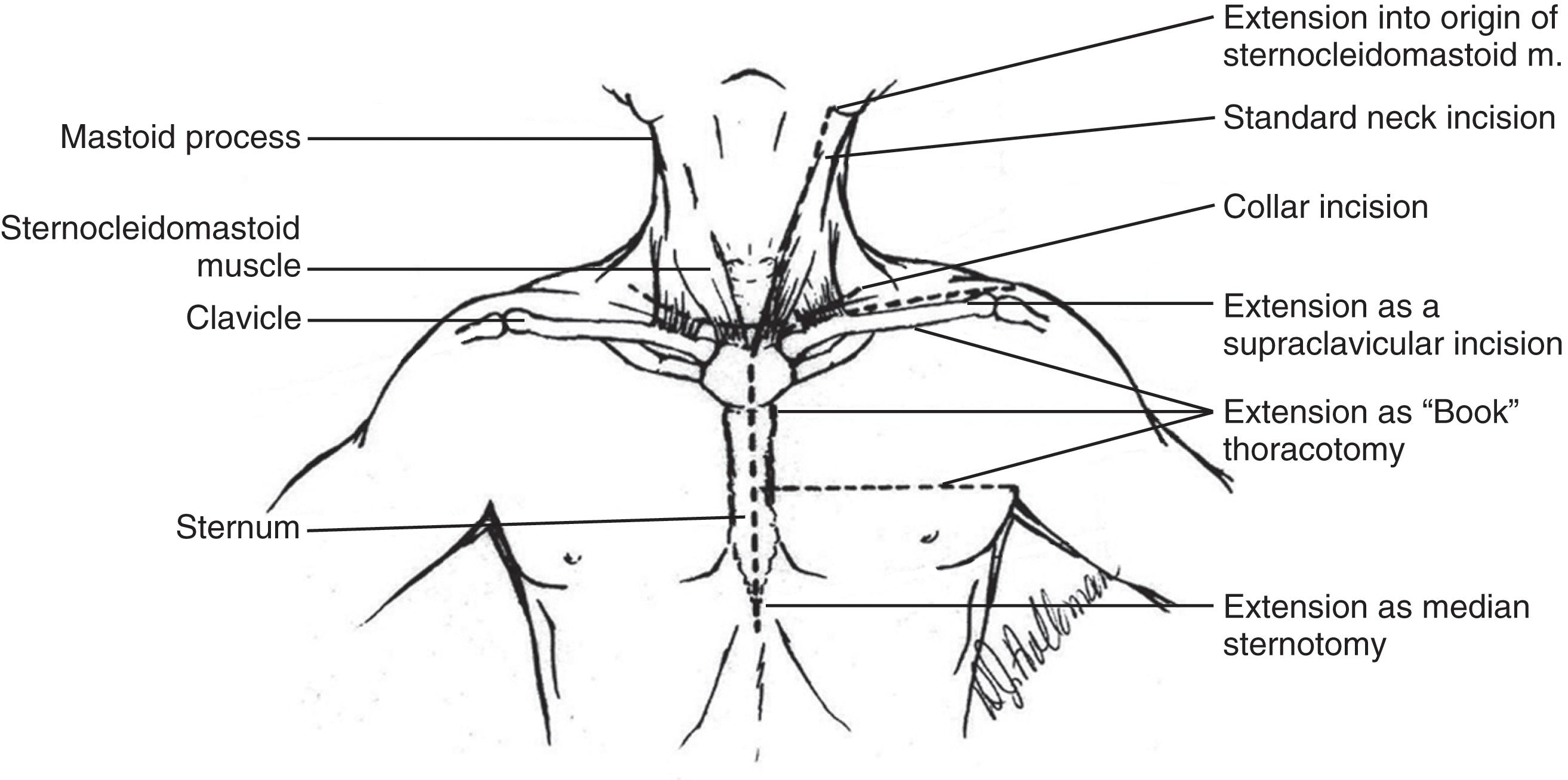Physical Address
304 North Cardinal St.
Dorchester Center, MA 02124
The neck has been a source of tremendous interest in the trauma surgical literature for several hundred years. Its anatomic compactness places vital anatomic structures in close proximity to each other, making the patient prone to multisystem injuries as the result of a single traumatic event. The debate about the proper treatment of neck trauma has persisted since the 16th century when Ambroise Paré reportedly attended to a victim of a laceration to the common carotid artery and internal jugular vein sustained in a duel. Although Paré’s patient survived, he was rendered hemiplegic and aphasic. Complications still highlight discussions today regarding the appropriateness of aggressive surgical management of penetrating cervical injuries.
The neck contains a number of vital structures all in close proximity. The carotid artery and the internal jugular vein are juxtaposed immediately deep to the sternocleidomastoid muscle. The pharynx and its junction with the esophagus at the level of the cricopharyngeus musculature are immediately deep to the larynx and the trachea. The thyroid gland and the associated parathyroids are located in the anterior neck overlying the upper trachea. The thoracic duct is well protected as it traverses the neck and enters the jugular-subclavian system in the left side of the neck deep to the sternocleidomastoid muscle. The cervical vertebra and the spinal cord are the most posterior structures, except for the long cervical musculature.
The neck is conventionally divided into a series of triangles. Most surgical discussions center on the anatomy of the anterior triangles that encompass the area between the sternocleidomastoid muscles. Functionally, the neck is divided into three zones ( Fig. 1 ). The boundaries for zone I include the cricoid cartilage (superiorly), the thoracic inlet (inferiorly), and the sternocleidomastoid (laterally). Its surgical significance is the fact that this zone encompasses the major cervicothoracic vasculature, along with components of the aerodigestive tract. Zone III is the horizontal region of the neck cephalad to the angle of the mandible; its superior border is the base of skull. It is important to note that the internal carotid artery, which is cephalad to the angle of the mandible, is not readily accessible surgically, necessitating special maneuvers to achieve vascular control (e.g., surgical dislocation of the mandible). However, zone II (the area between the cricoid cartilage and the angle of the mandible) is readily accessible with the most direct surgical approach being achieved with an incision along the anterior border of the sternocleidomastoid muscle ( Fig. 2 ).


The initial evaluation of the patient sustaining neck injury should be dictated by the Advanced Trauma Life Support guidelines. Such guidelines provide a management framework to expeditiously identify life-threatening injuries and appropriately prioritize treatment. Presentations that warrant urgent surgical intervention, usually referred to as “hard signs” ( Table 1 ) of neck injury, include subcutaneous emphysema, expanding or pulsatile hematoma, or brisk bleeding from the wound. All are overt findings suggestive of a major vascular or aerodigestive tract injury. Diagnostic studies are not essential for these presentations. Optimal airway management is always the first priority.
| Hard Signs | Soft Signs |
|---|---|
| Active bleeding | Dysphagia |
| Expanding or pulsatile hematoma | Voice change |
| Subcutaneous emphysema or air bubbling from wound |
|
Without the hard signs of injury and, consequently, a need for immediate surgical intervention, a more selective or expectant approach can be initiated. The armamentarium of this selective approach includes multidetector computed tomography (CT) with or without angiography, esophagoscopy, esophagography, laryngoscopy/tracheoscopy, or arteriography. Although subtle findings (so-called soft signs; see Table 1 ) such as difficulty speaking or change in voice tone could prompt such a selective evaluation, the major controversy centers around whether patients with zone II injury and no hard findings should undergo selective management or just observation (expectant management).
A detailed neurologic examination is required for all cervical injuries. Penetrating wounds should never be explored locally. This maneuver should only be done in the operating theater as part of a formal neck exploration. In order to limit patient gagging and coughing, insertion of nasogastric tubes or nasal tracheal suctioning should be withheld, if possible, until the induction of anesthesia in the operating theater.
Become a Clinical Tree membership for Full access and enjoy Unlimited articles
If you are a member. Log in here